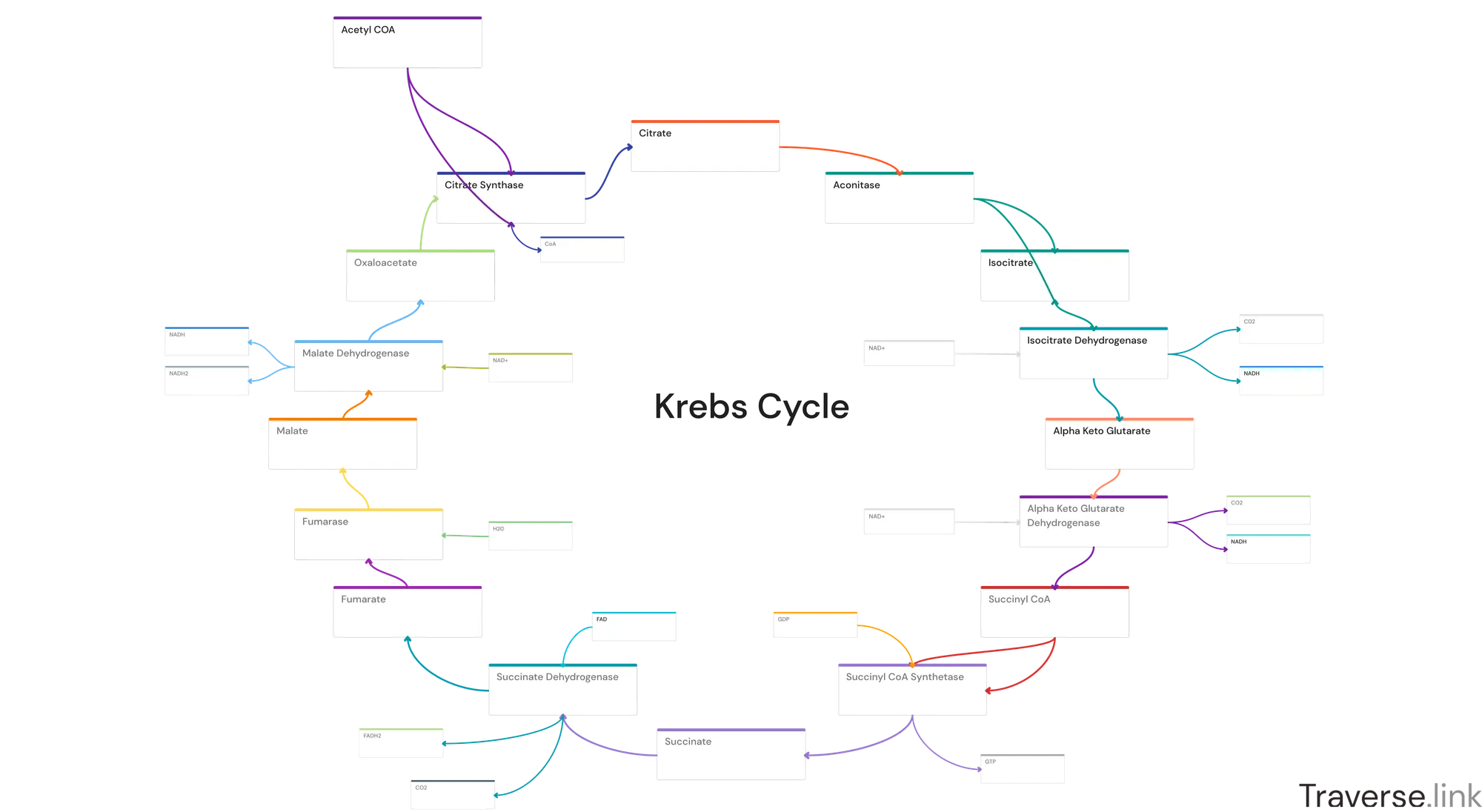About the Author: Raleigh is a medical student who scored in the 99th percentile on the MCAT, and used Traverse to learn and memorize pathways like Glycolysis and the Krebs Cycle
It's no secret that it's sometimes easier to forget biological pathways than other facts within medical school. This is due to Anki’s limited ability to connect SRS with concept maps of biological pathways.
Below I share my simple diagram of the Krebs Cycle, which helped me master all the steps for the MCAT. You’ll also find an explanation below, and you can copy the diagram and even add flashcards to it.

You can create your own copy of the Krebs cycle diagram here (this will allow you to re-arrange, add notes and even create flashcards)

Steps of the Krebs Cycle
The Krebs cycle, also known as the citric acid cycle or tricarboxylic acid cycle (TCA cycle), is a series of chemical reactions in cellular respiration that generates energy through the oxidation of acetyl-CoA derived from carbohydrates, fats, and proteins. This process takes place in the mitochondria of eukaryotic cells.
Here are the steps of the Krebs cycle, with detailed diagrams:
- Acetyl-CoA formation: Acetyl-CoA is formed from the breakdown of carbohydrates (glycolysis), fats (beta-oxidation), and proteins (amino acid catabolism). Acetyl-CoA (2 carbons) combines with oxaloacetate (4 carbons) to form citrate (6 carbons). This step is catalyzed by the enzyme citrate synthase.

- Citrate isomerization: Citrate is converted to its isomer, isocitrate, through a two-step process. First, the enzyme aconitase removes a water molecule from citrate, forming cis-aconitate. Then, aconitase adds the water molecule back in a different position, creating isocitrate.

- Alpha-ketoglutarate formation and first CO2 release: In this step, isocitrate dehydrogenase catalyzes the oxidation of isocitrate, generating NADH from NAD+ and releasing a CO2 molecule. The resulting compound, alpha-ketoglutarate, has five carbons.

- Succinyl-CoA formation and second CO2 release: The enzyme alpha-ketoglutarate dehydrogenase catalyzes the conversion of alpha-ketoglutarate to succinyl-CoA. This step involves another oxidation, generating NADH and releasing a second CO2 molecule.

- Succinate formation: Succinyl-CoA synthetase catalyzes the conversion of succinyl-CoA to succinate. In this process, a molecule of guanosine triphosphate (GTP) is generated through substrate-level phosphorylation, which can be used to generate ATP.

- Fumarate formation: The enzyme succinate dehydrogenase catalyzes the oxidation of succinate to fumarate, reducing FAD to FADH2 in the process.

- Malate formation: Fumarase catalyzes the hydration of fumarate, adding a water molecule and converting it into malate.

- Oxaloacetate regeneration: Malate dehydrogenase catalyzes the oxidation of malate, generating NADH and regenerating oxaloacetate, which restarts the cycle.

In summary, the Krebs cycle produces the following from one acetyl-CoA molecule:
- 3 NADH
- 1 FADH2
- 1 GTP (which can be used to generate ATP)
- 2 CO2 (released as waste)
These high-energy molecules (NADH and FADH2) will enter the electron transport chain (ETC) to produce ATP via oxidative phosphorylation.
Get your copy of the Krebs cycle diagram here (this will allow you to re-arrange, add notes and even create flashcards)
